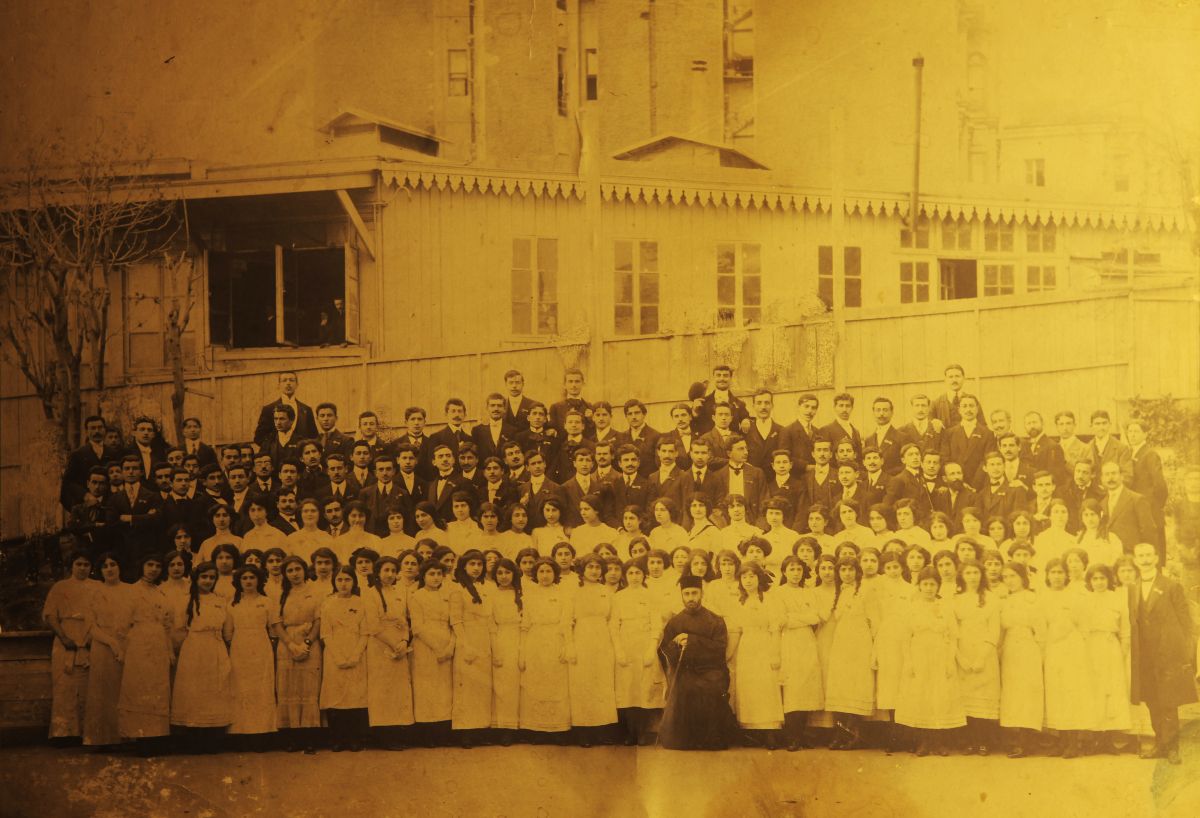
NEW YORK, NY—DELOS has released Komitas: Divine Liturgy by revered Armenian composer Komitas Vartabed (1869-1935). The world-premiere recording is a mixed-voice arrangement by his 21st century compatriot Vache Sharafyan. This new version features the critically acclaimed Latvian Radio Choir led by its artistic director, Sigvards Klava, with guest soloists bass Hovhannes Nersesyan and tenor Armen Badalyan. The recording was made at St. John’s Church (Sv. Jana Baznica), Riga, Latvia in September of 2019.
It is impossible to overstate the significance of Komitas Vartabed’s music to the Armenian identity. “For Armenians, music is memory,” wrote Michael Church in The Guardian. “And whenever they gather to honor their dead—as Armenians all over the world do on Sunday, April 24, to commemorate the anniversary of the 1915 genocide in which 1.5 million Armenians in Turkey were either slaughtered or died on forced marches into exile—the songs they sing are by Komitas Vartabed, the composer who speaks for the soul of their nation.” Komitas, a priest and an eminent ethnomusicologist, was himself a victim of the 1915 Armenian Genocide. Though he survived, his psyche was shattered, and he spent most of the last two decades of his life in exile in a Paris asylum.
Komitas began working on the Divine Liturgy in 1892; at least 10 versions exist. The final version—the one presented on this recording—dates from 1914-1915 and was completed just before his deportation from Constantinople, where he had settled in 1910, to a prison camp in Cankin. The Liturgy is thus one of his final works. Komitas’ output was modest: 80 choral works and songs, arrangements of the Armenian mass and some dances for piano. And yet he single-handedly laid the foundation for Armenia’s classical tradition, as his better-known compatriot Aram Khachaturian acknowledged. As a collector and arranger of the authentic folksongs of rural peasants, Komitas did for Armenia what Bartók did for Hungary, turning simple material into bewitchingly sophisticated polyphony. Komitas collected, transcribed, researched and compared more than 3,000 pieces of Armenian folk music, more than half of which were subsequently lost and only around 1,200 are now extant. His appetite for songs was voracious, and his transcriptions reflect a remarkable ear, seamlessly interweaving threads of music, movement and complex social relationships.

The Divine Liturgy was originally composed for a male choir, and previous attempts over the years to transcribe it for mixed-choir performance were not enthusiastically received. But Tigran Mkrtchyan, the Armenian ambassador to the Republic of Latvia, Lithuania and Estonia, believed a new concert version would bring more listeners to the masterwork, encouraging them to concentrate more on the music itself and the logic of its dramaturgy rather than on its ritual aspect. Vache Sharafyan’s arrangement follows the original male-choir version as closely as possible, with the female voices lending it extra color and brightness. The project took three years of preparation, and finally, on September 20, 2019, the Latvian Radio Choir, led by its artistic director, Sigvards Klava, became the first non-Armenian mixed choir to perform the Divine Liturgy, in an historic performance at St. John’s Church in Riga commemorating the 150th anniversary of Komitas’s birth. This recording took place during the three days following that historic performance.




Be the first to comment